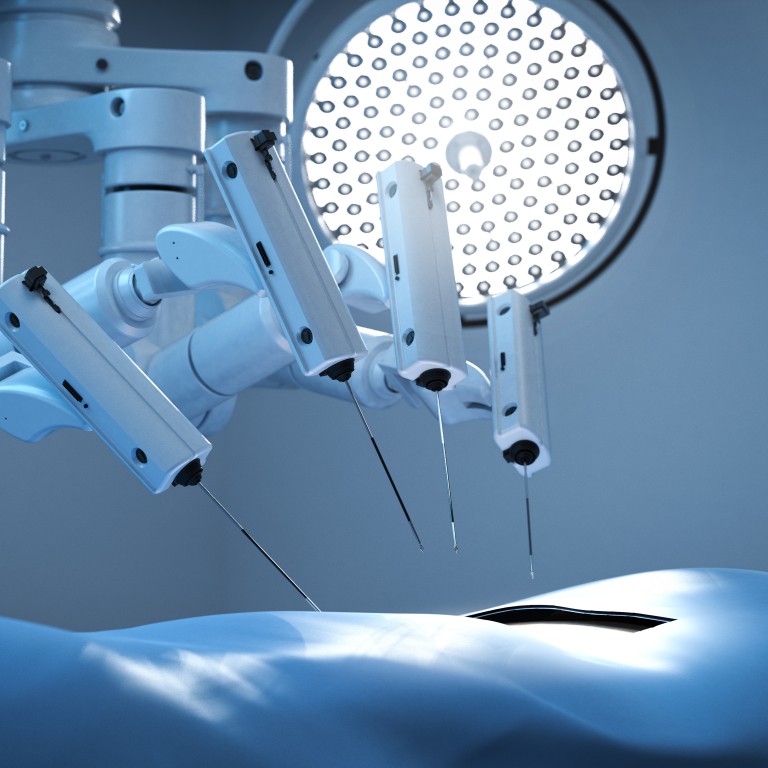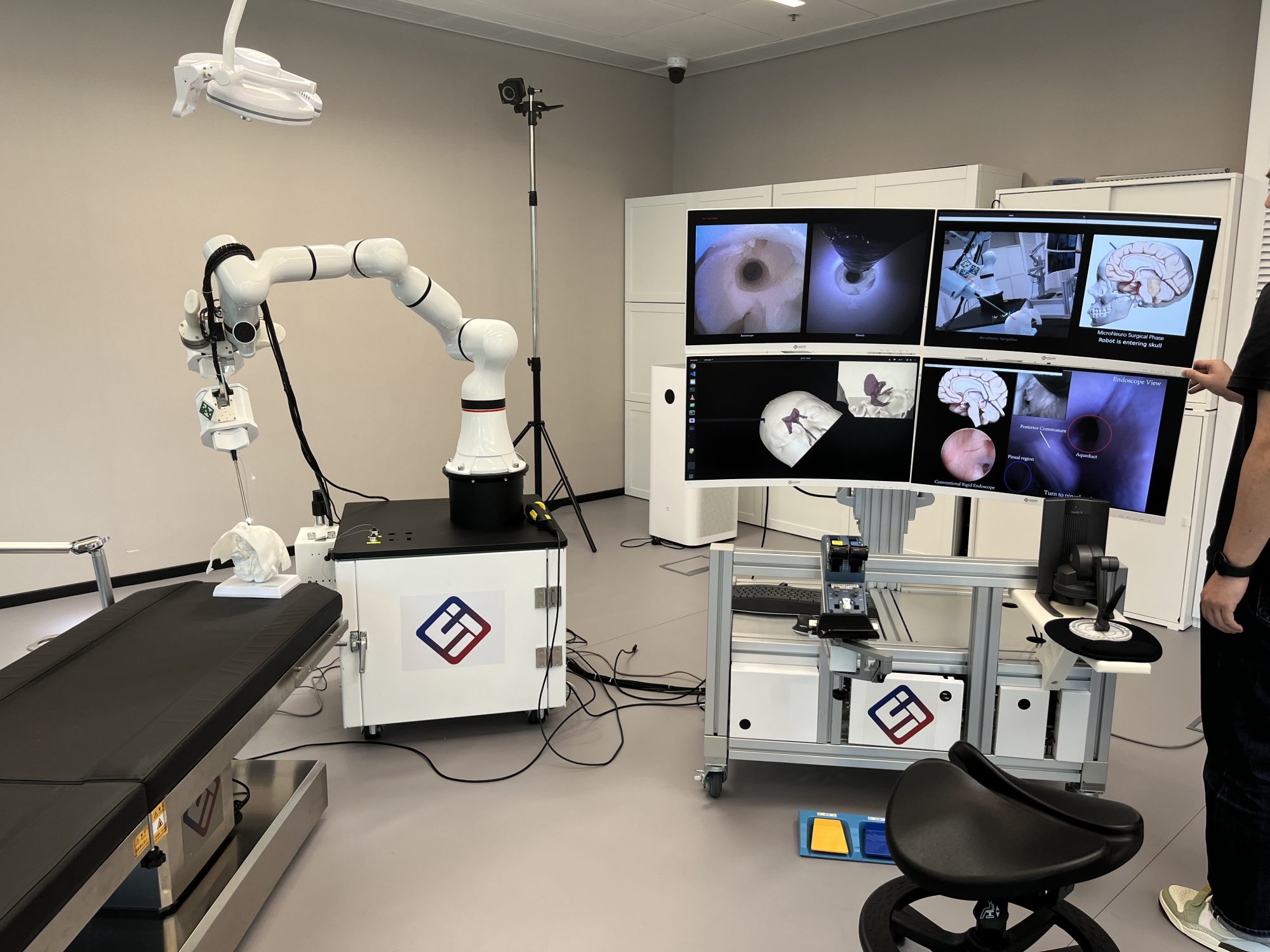
AI-powered brain surgery becomes a reality in Hong Kong after launch from state-run research centre
- The Centre for Artificial Intelligence and Robotics, under the Chinese Academy of Sciences, completed successful trials of a robot that treats brain tumours
- The centre faces challenges from US sanctions that restrict access to advanced AI chips, but its director says ‘Chinese companies will catch up’
A Hong Kong-based research centre under the Chinese Academy of Sciences (CAS), China’s national research institute, plans to launch a robotics system for brain surgery in the near future, despite challenges from a shortage of talent and artificial intelligence (AI) chips.
The Centre for Artificial Intelligence and Robotics (CAIR), established in 2019, has completed three successful cadaver trials with its MicroNeuro robot, which can perform deep brain surgery “in a minimally invasive manner”, Liu Hongbin, the centre’s executive director, told the Post in an interview on Thursday.
The main approach today requires surgeons to operate with rigid tools and open large windows on a patient’s scalp, which damages a lot of healthy brain tissue, Liu said.
“Brain surgery is a type of surgery that needs technology the most because it’s a very dangerous procedure,” Liu said. “Surgeons really want to use AI and tech innovation to make this type of procedure much less invasive than it is now.”

CAIR’s robotic system allows surgeons to use a tiny flexible instrument and a navigation system powered by AI and augmented reality, which reduces brain tissue damage by at least 50 per cent, he added.
Trials conducted with the Prince of Wales Hospital in Hong Kong have shown that the robot can carry out a minimally invasive brain surgery called endoscopic third ventriculostomy and pineal biopsy, used to treat tumours in the centre of the brain.
CAIR is now working on fine-tuning the robotic system to comply with regulations, and is hoping to start clinical trials some time next year after receiving approval from the city’s Hospital Authority, Liu said.
CAIR, funded by Beijing’s state-run CAS and Hong Kong’s InnoHK initiative, was established as part of the central government’s plan to develop the southern semi-autonomous city into an innovation and technology hub, according to Liu.
SenseTime unveils consumer robot that plays ancient Chinese game Go
The centre has benefited from Hong Kong’s universities, which produce a lot of “very talented young researchers”, Liu said. But the city is missing experienced engineers who understand how to design electronics and write professional software, so CAIR is looking to relocate mainland engineers to Hong Kong, he added.
“In the near future, I think we will face some challenges on that if we try to compete with international players in this field,” Liu said. “But I think in the long run, eventually Chinese companies will catch up.”

